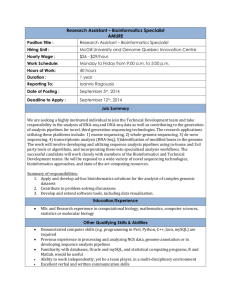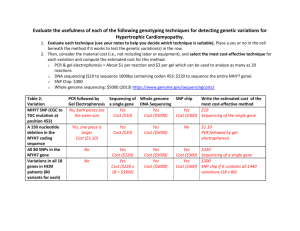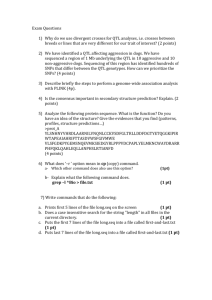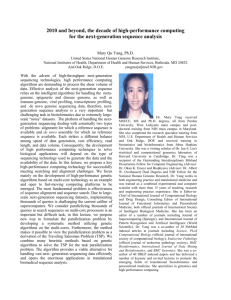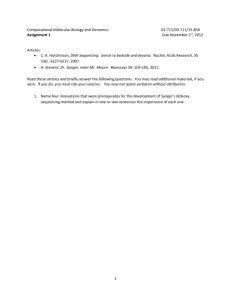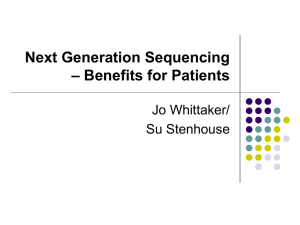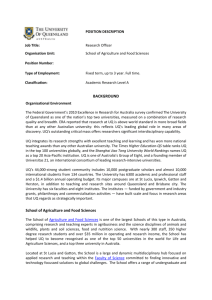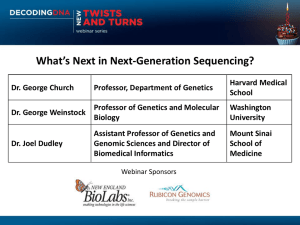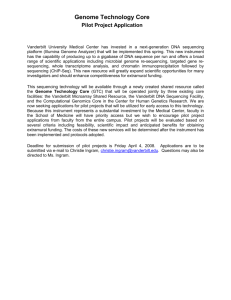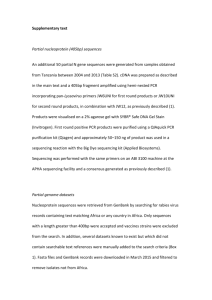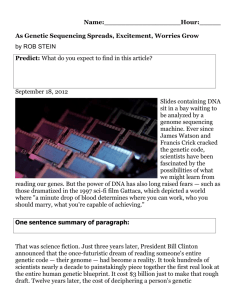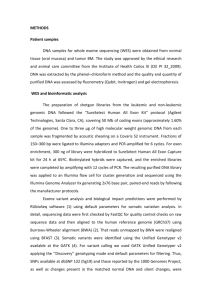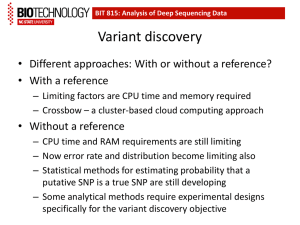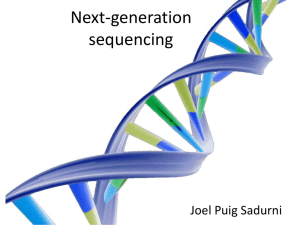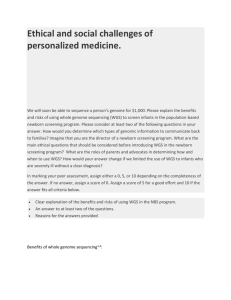STAT115 STAT215 BIO512 BIST298 Introduction to Computational
advertisement
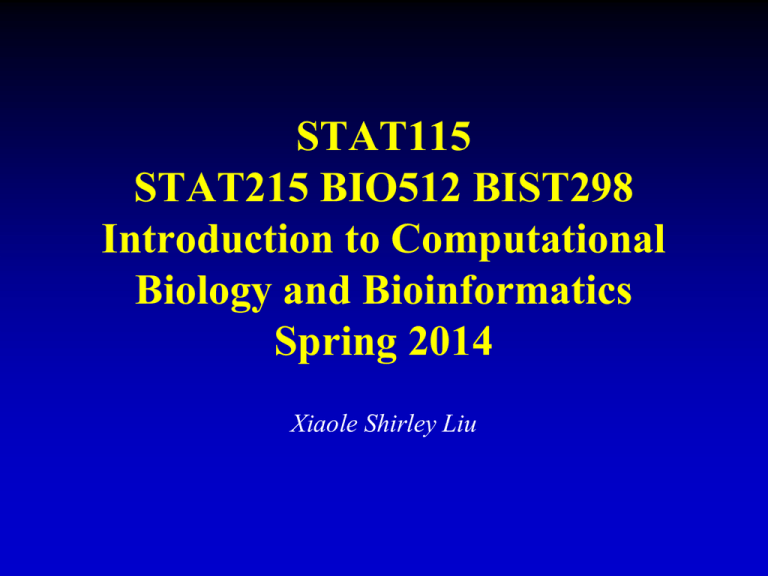
STAT115 STAT215 BIO512 BIST298 Introduction to Computational Biology and Bioinformatics Spring 2014 Xiaole Shirley Liu STAT115 STAT 215 BIO512 BIST 298 Student Introduction • Name, School, Grade, Major • What do you hope to learn from this course Bioinformatics and Computational Biology • Interdisciplinary – Statistics, Biology, Computer Science • Applied – From freshman to postdocs – Useful training for many – The more you practice, the better you get • Moves with technology development 3 STAT115 The Protein Sequence and Structure Wave • • • • • • • 4 1955: Sanger sequenced bovine insulin 1970: Smith-Waterman algorithm 1973: PDB 1990: BLAST 1994: BLOCKS database 1994-: CASP 1997-: Proteomics STAT115 The Microarray Wave • Microarray contains hundreds to millions of tiny probes • Simultaneously detect how much each gene is expressed 5 STAT115 ALL vs AML • Golub et al, Science 1999. 6 STAT115 ALL vs AML 7 STAT115 “Microarrays” Today • Infer the expression value of all the genes from 1000 probes • High throughput drug screen 8 STAT115 The DNA Sequencing Wave • • • • • • 9 1953: DNA structure 1972: Recombinant DNA 1977: Sanger sequencing 1985: PCR 1988: NCBI 1990: BLAST STAT115 Sequencing in the 1970s 10 STAT115 The Human Genome Race • Human Genome Project: 1990-2003 – Originally 1990-2005 – Boosted by technology improvement (automation improved throughput and quality with reduced cost) – Competition from Celera 11 STAT115 Human Genome Sequencing • Clone-by-clone and whole-genome shotgun 12 STAT115 The Human Genome Race • Human Genome Project: 1990-2003 – Originally 1990-2005 – Boosted by technology improvement (automation improved throughput and quality with reduced cost) – Competition from Celera • Informatics essential for both the public and private sequencing efforts – Sequence assembly and gene prediction – Working draft finished simultaneously spring 2000 13 STAT115 Sequencing in 2001 Sequencing in 2007 Sequencing Today • 1000 Genomes • Personal genome sequencing • HiSeq2500 16 STAT115 Personalized Disease Susceptibility Test and Treatment • GWAS Catalog 17 • Cancer Genome Sequencing STAT115 Big Data Challenges 18 STAT115 19 STAT115 Is This Course For Me? • Biologists • Statistician • Computer Scientists • STAT115/STAT215/BIO512/BIST298 • http://stat115.org/ 20 STAT115 Class Information • Professor and Lectures – Video recording in 2-4 sections – Tue / Thu 11:30am-1pm, SC221 – Office hours • Roughly 4 modules – – – – 21 Gene expression Transcriptional and epigenetic gene regulation Human genetics, association studies Translational cancer bioinformatics STAT115 Class Information • Teaching Fellows Yang Li Lin Liu • Labs: Wed 6 – 8pm, Science Center 418D – Tue 5:30 – 7pm, HSPH Kresge 209, Boston? – Make sure you come tomorrow! 22 STAT115 Class Information • HW and Grading – – – – – – HW 6 * 10 or 6 * 12 Exams (midterm + final) * 10 Class participation: 20 Algorithm videos: 5 Lecture notes: extra 5 points Late days • Auditing? 23 STAT115 All biology is becoming computational, much the same way it has became molecular … Otherwise “low input, high throughput and no output science” --- Sydney Brenner 2002 Nobel Prize
